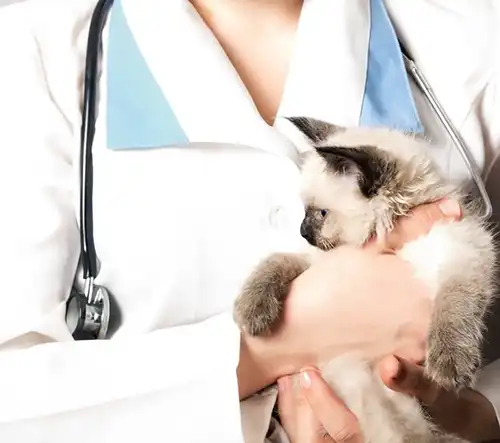Going to the veterinarian can be nerve-wracking for pets and owners alike. By preparing your cat to the vet, you can make the experience smoother, reduce stress, and keep your feline’s health on track. Studies have shown that cats fare better when they feel calm and safe before medical visits. Simple strategies like introducing your cat to its carrier beforehand and practicing gentle handling can help familiarize them with travel routines. You can also use calming aids, such as pheromone sprays, to ease anxiety. Veterinary experts emphasize the importance of scheduling regular checkups to detect illnesses in their early stages. A well-prepared cat is more likely to receive thorough examinations and accurate diagnoses. Setting aside time to reassure your cat, establish a routine, and anticipate their needs boosts your cat’s comfort during every veterinary visit. Make the most of each appointment by nurturing a calm environment and building trust.
Does your feline friend enjoy car rides? Chances are, she probably doesn’t. Most of our furry patients are definitely not big fans of travel. However, proper veterinary care is crucial for your cat’s health. Regardless of your pet’s opinion on the matter, she’ll look and feel better with regular appointments. An Orlando, FL vet discusses bringing your kitty into the clinic in this article.
Carrier
When preparing your cat for the vet, always transport your feline companion in a crate or carrier. Hard-shell carriers are the best choice, offering robust protection from jostling and enhanced safety during accidents. If comfort is your priority, a fabric carrier can be a suitable alternative. Although cardboard ‘donut’ boxes might suffice temporarily, particularly for newly adopted pets, they’re intended as single-use solutions and are not recommended for regular visits.
Many cats bolt for their favorite hiding spots as soon as they spot their carriers. You can help your feline pal form a more positive impression of hers. Add some comfy bedding, and give her toys, treats, and catnip near it. You may also want to leave it out between appointments. (If all else fails, tell Fluffy to stay out of it. She’ll probably jump right in!)
Drive
On the way over to the clinic, try to avoid speed bumps, potholes, sharp turns, and sudden stops and starts. Playing some soothing music may help keep your cat calm. If your feline friend is extremely nervous, ask your vet for tips on using kitty-calming products, such as pheromones.
Appointment Schedule
Fluffy’s veterinary care, especially when preparing your cat for the vet, depends on her age, lifestyle, and health. If you have a kitten, plan for several visits during her first year, which are vital for establishing a healthy start. These appointments will cover initial exams, parasite control, vaccinations, microchipping, and spay/neuter surgery. For healthy adult cats, we typically suggest annual check-ups. Older cats and those with health conditions may require more frequent visits to monitor their well-being, as should cats with outdoor access.
Emergency Visits
Cats can be secretive about letting on when they don’t feel well, but they do give off clues. Watch for warning signs. These may include things like hiding, withdrawal, vomiting, diarrhea, weight loss, respiratory issues, behavioral changes, discharge, and lack of appetite. Call your vet immediately if you notice anything unusual.
Preparing Your Cat for the Vet in 2025: Essential Steps for a Smooth Visit
How should pet owners handle the waiting room environment?
To manage the waiting room environment effectively, pet owners should ensure their cats remain in secure carriers to minimize stress and prevent any escape attempts. It’s beneficial to bring along items that smell familiar to the cat, like blankets or toys, to provide comfort. Quiet activities, such as gently talking to the pet or offering treats, can help keep them calm. Additionally, maintaining distance from other animals in the waiting room can prevent unnecessary stress or confrontations, supporting a smoother visit for both pet and owner.
How should owners handle pre-visit anxiety?
To manage pre-visit anxiety in cats, creating a positive association with their carrier is beneficial. Introduce comfortable bedding, toys, treats, and catnip inside the carrier and leave it accessible between vet visits. During car rides to the vet, minimize anxiety by avoiding rough driving, such as sharp turns and sudden stops. Playing soothing music can also help calm your cat. Additionally, consult your veterinarian about using pheromone sprays or other calming products designed for cats to further reduce stress during travel to appointments.What questions should owners ask during the consultation?
During a veterinary consultation, cat owners should ask about their pet’s specific health needs, including recommended vaccinations and parasite control measures. It’s also beneficial to inquire about dietary recommendations tailored to their cat’s age, lifestyle, and health conditions. Owners can discuss behavioral concerns and seek advice on managing stress during travel. Additionally, clarifying the signs of illness and the frequency of needed check-ups, especially for kittens, senior cats, or those with existing health issues, ensures proactive care and timely interventions.
What signs of post-procedure complications should they watch for?
After veterinary procedures, cat owners should monitor for signs of complications, which can include abnormal behavior, excessive lethargy, redness, swelling, or discharge at the surgery site. Additionally, changes in appetite, persistent vomiting or diarrhea, and unusual withdrawal or hiding are critical indicators of post-surgical issues. Respiratory difficulties or sudden weight changes also warrant immediate attention. Observing your cat closely after veterinary visits ensures timely detection of any adverse reactions, allowing for prompt consultation with a veterinarian if any of these symptoms develop.
How can owners acclimate their cat to being handled and examined?
To acclimate a cat to handling and examination, owners can start by creating positive associations with the carrier. Placing comfortable bedding, toys, and treats inside the carrier encourages the cat to enter voluntarily. Regularly leaving the carrier out in the home allows the cat to explore it at their own pace. During vet visits, maintaining a calm environment is beneficial; this includes avoiding abrupt driving maneuvers and using soothing music. Additionally, employing pheromone sprays can help reduce anxiety, making the veterinary experience less stressful for the cat.
Please contact us with questions or concerns about your pet’s health or care. As your Orlando, FL animal clinic, we’re here to help!






!Social Media Icons